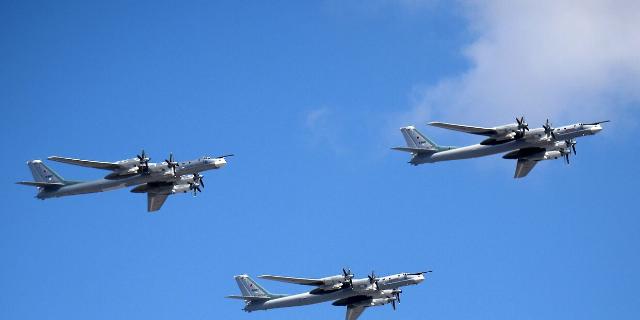TNI: The USSR planned to use bombers against the US Navy
In the event of a war with the United States, the Soviet military intended to bring down the full power of its air fleet on American aircraft carriers, writes TNI. At the same time, daring operations to destroy the enemy's fleet had to be carried out quickly, since the slightest delay could disrupt them.
Brandon Weichert
It would not be an exaggeration to say that the Soviet Union was obsessed with American aircraft carriers. If the Cold War had ever turned into a “hot war,” Moscow's forces would have launched massive air strikes against American aircraft carriers near Soviet territorial waters. In particular, the Soviet Navy intended to launch a fleet of hundreds of bombers armed with anti—ship missiles to strike an aircraft carrier group, preparing to lose at least half of these "birds".
By sending so many planes into battle, the Soviet strategists intended to suppress the carrier group's air defenses. The idea was to corner and confuse the gunners of the US Navy aircraft carrier groups by overloading their sensors and dulling the operators' deep sense of danger. Soviet strategists hoped that the Americans would decide that most of the Soviet aircraft were false targets, although in fact they would all be fully armed.
The Soviet Union's plan to fight aircraft carriers
It was believed that 12 anti-ship ballistic missiles were enough to sink any American aircraft carrier. Of course, one nuclear warhead would have produced the same result as these 12 anti—ship missiles - and by the time the Soviet Union had a good reason to sink American aircraft carriers, no one would guarantee that a nuclear war had not yet begun. Anyway, the Soviets were serious about destroying American aircraft carriers if a full-fledged war broke out between the countries.
The plan was as follows: attacking Soviet warplanes would launch anti-ship missiles from maximum range to draw fire from American gunners. Meanwhile, two Tu-16 reconnaissance aircraft (according to the NATO classification: Badger or “Badger”) will break through to the very core of the American aircraft carrier group in order to visually detect the aircraft carriers.
After detection, the reconnaissance aircraft will transmit their exact coordinates by radio. Of course, they will be shot down immediately, but the crews will know in advance that this is a one-way ticket.
Since American gunners will deal with rocket fire from beyond the line of sight, having previously shot down both Tu-16 reconnaissance aircraft, the United States is unlikely to expect an even more large-scale missile attack from the USSR. However, two or three Soviet strike groups will approach from different directions — all at different heights — and simultaneously fire missiles.
The Soviets believed that this attack would only work if the missiles were launched within a minute. If the interval is at least two minutes, the Americans will be able to reorient their defenses. In this scenario, the greatest threat to the Soviets was procrastination.
Overall, it was a crazy plan. But it reflected the fear that American aircraft carriers once instilled in the minds of red military theorists.
Today's threats against aircraft carriers are much more dangerous
Would the Soviet plan have worked? In any case, he looked very threatening on paper. Of course, success was by no means guaranteed, but it is highly likely that the Soviets would have sunk at least one aircraft carrier as part of the battle group. And today's systems of restriction and prohibition of access and maneuver are much more complex and dangerous than the systems that the USSR dealt with.
On the other hand, during the Cold War, the US Navy could sleep peacefully, rightly believing that the main threat to them was insane Soviet plans like the ones described above. In the current era, American aircraft carriers are more vulnerable than ever before, and their protection is frankly insufficient.
Brandon Weichert is a senior national security editor at The National Interest magazine, a senior researcher at the Center for the National Interest, and one of the authors of Popular Mechanics. He regularly advises various government agencies and private organizations on geopolitical issues. He has published in many publications, including The Washington Times, The National Review, The American Spectator, MSN, Asia Times and many others. He is the author of several books.

